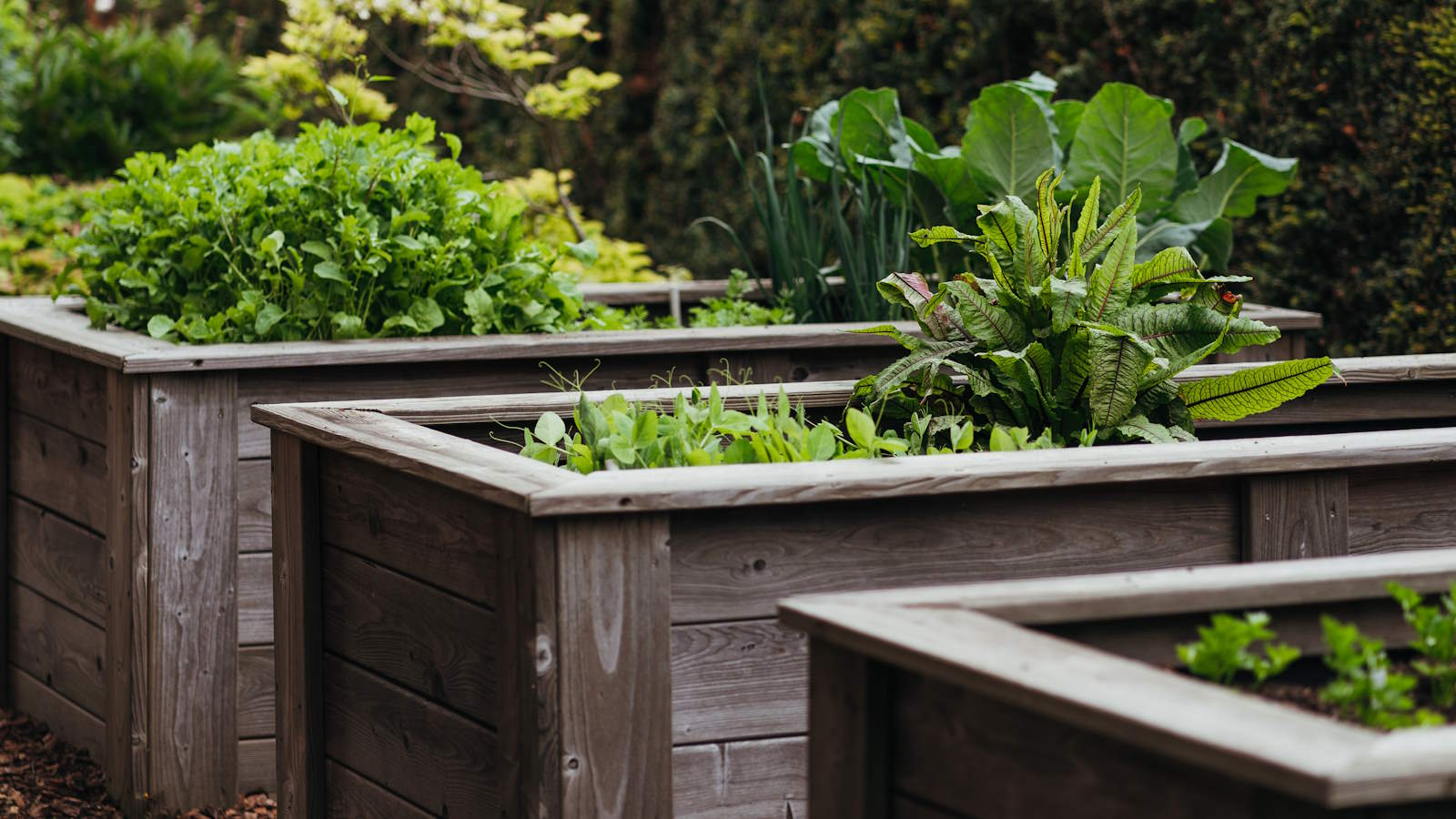
Raised beds offer a fantastic way to grow flowers and food at home and can be ideal low-maintenance features in any garden. No matter the size or material you choose for the bed, the long-term success of any raised bed will depend on the health of the soil inside.
The dream for any raised bed ideas is lots of flowers and bumper harvests of delicious homegrown vegetables. To keep that dream alive, fertilizing the soil annually is a key way to keep plants in any raised bed happy.
How often you fertilize a raised bed, and what you feed it with, will vary depending on the plants and the products. However, there are some good rules to follow to keep the soil in any raised beds healthy year after year.
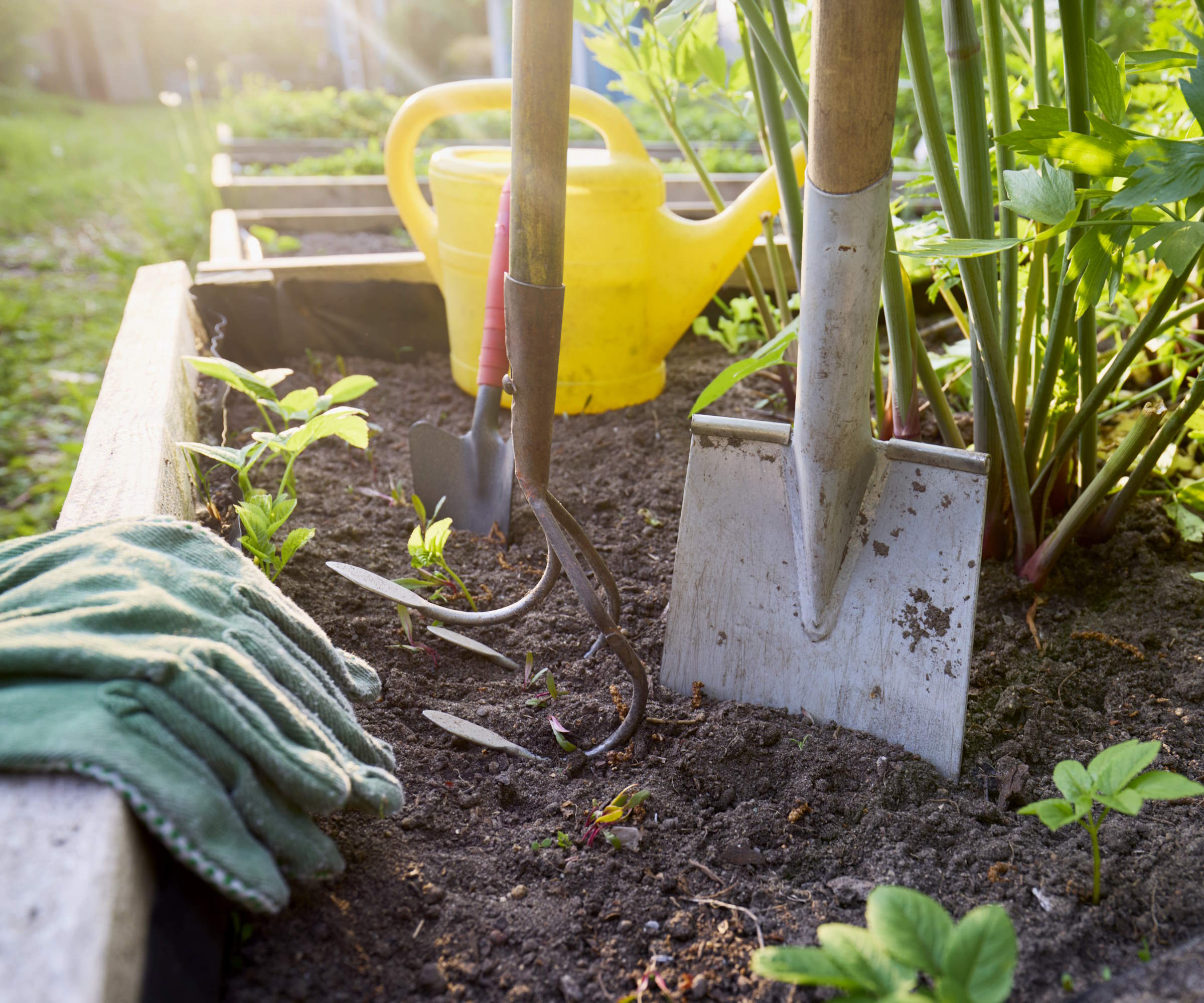
Do I need to fertilize my raised garden bed?
You need to fertilize raised garden beds to manage the soil health as plants will use up the nutrients over time - and that soil will need rejuvenation. I have grown vegetables, flowers, and herbs in raised beds over my years as a professional kitchen gardener and have sought advice from two experts to reveal when you should be feeding beds, along with some pointers on the best fertilizers to use.
When to fertilize raised beds
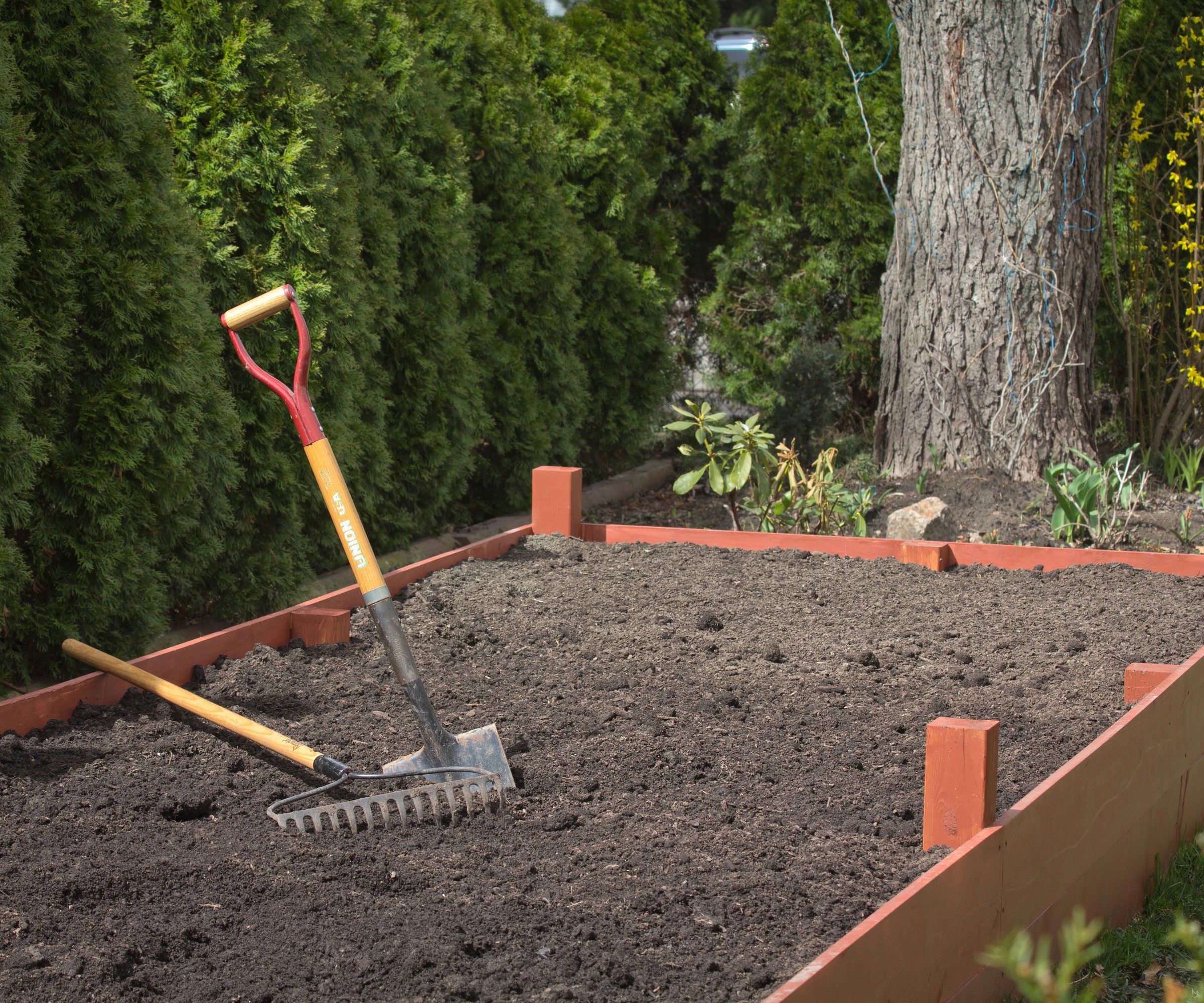
Raised beds typically benefit from feeding on more than one occasion throughout a growing season. Whether you are growing flowers, vegetables, fruit, or herbs, in the raised bed an addition of nutrients over the year helps keep plants healthy and productive.
Before commencing any fertilizing each year, it is recommended to do a soil test to see the current nutrient makeup of the soil. An excess of certain nutrients can cause issues while a test will also highlight deficiencies of others to help you choose the right products for feeding.
The first window to feed comes in spring. Adding organic matter, such as compost, well-rotted manure, or leaf mold, into the existing soil will improve the structure, fertility, and moisture retention. This organic matter can be mixed into the soil, or added to the surface as part of no-dig gardening or lasagna gardening principles.
Any time you plant vegetables, flowers, herbs, or shrubs into the raised bed, it is good practice to add slow-release balanced fertilizer. Such a balanced feed contains important nutrients required to develop shoots and roots to help plants establish into the bed.
It is also beneficial to regularly feed plants during the prime growing season, especially if you are growing flowers, vegetables, or herbs. This routine will start in late spring and run through to early fall, depending on the plant.
How often to fertilize a raised bed garden
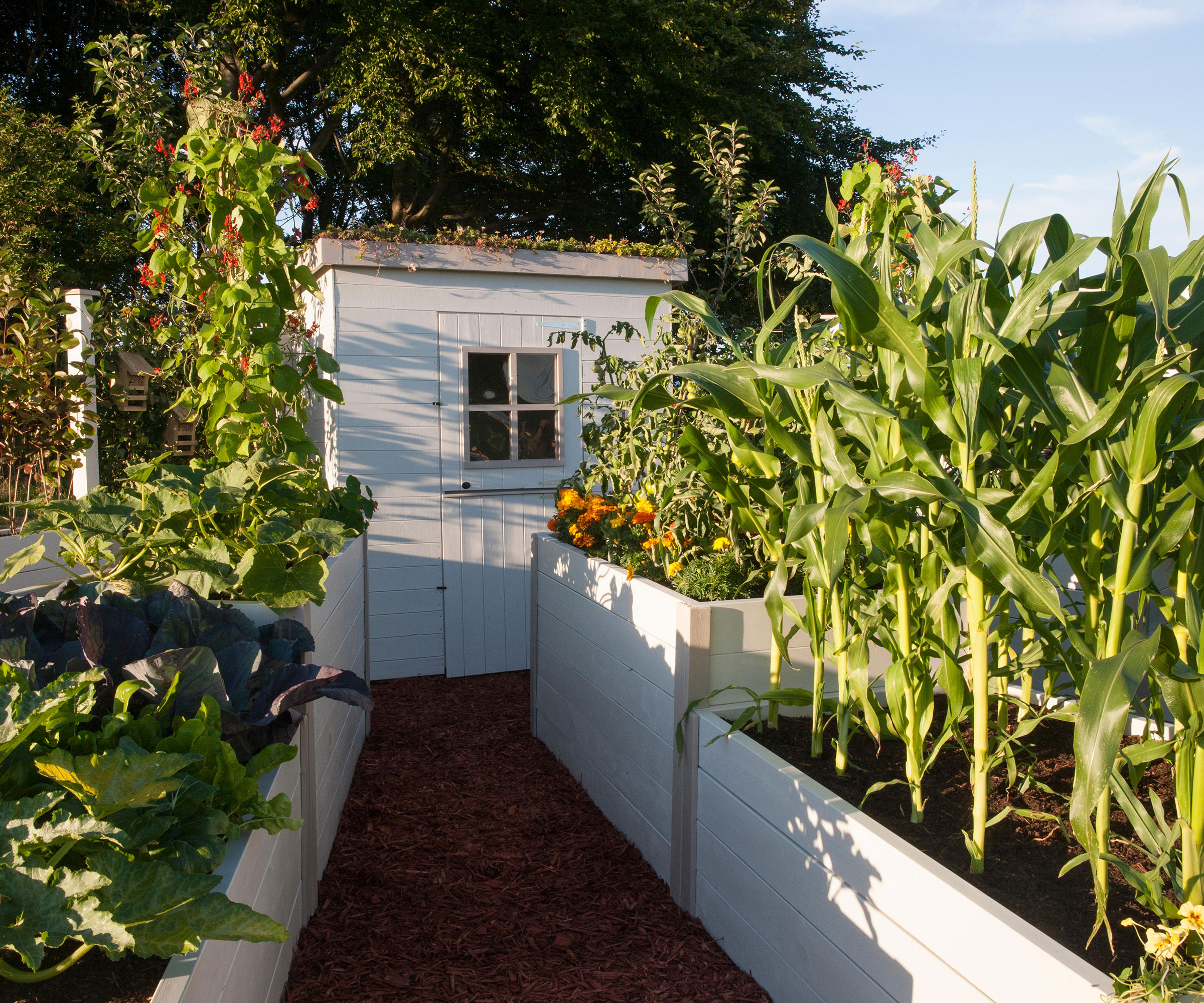
The number of times you feed a raised bed garden will depend on the plants you are growing and the products you are using.
Adding extra nutrients at least once a year is a prerequisite. Fertilizing in spring is vital to help replenish the goodness in the soil and give plants access to nutrients when they start growing for the year. Not fertilizing in spring would be regarded as a raised bed gardening mistake and plants can suffer from a lack of fertility as the soil health suffers.
Dan Allen, a master gardener for Farmscape, admits that the need for regular additional fertilizers can depend on how the soil was amended at the start of the season.
‘Raised beds that have been amended thoroughly with a good compost can succeed without additional fertilizers,’ he says. ‘Although it doesn't hurt to apply fertilizers as long as you're applying them according to the label and at the right point of the growing season.’
Feeds can either be granular or liquid and the type you opt for will impact how regularly the raised bed garden needs to be fed throughout the year.
Granular fertilizers are slow-release and can be used anywhere from once per month to once per season. Liquid feeds tend to be higher in nutrients but leach quickly and therefore need to be applied more regularly. Such liquid fertilizers are suited to flowering and fruiting plants and are added when you water plants every few weeks through the season.
What is the best fertilizer for a raised bed?
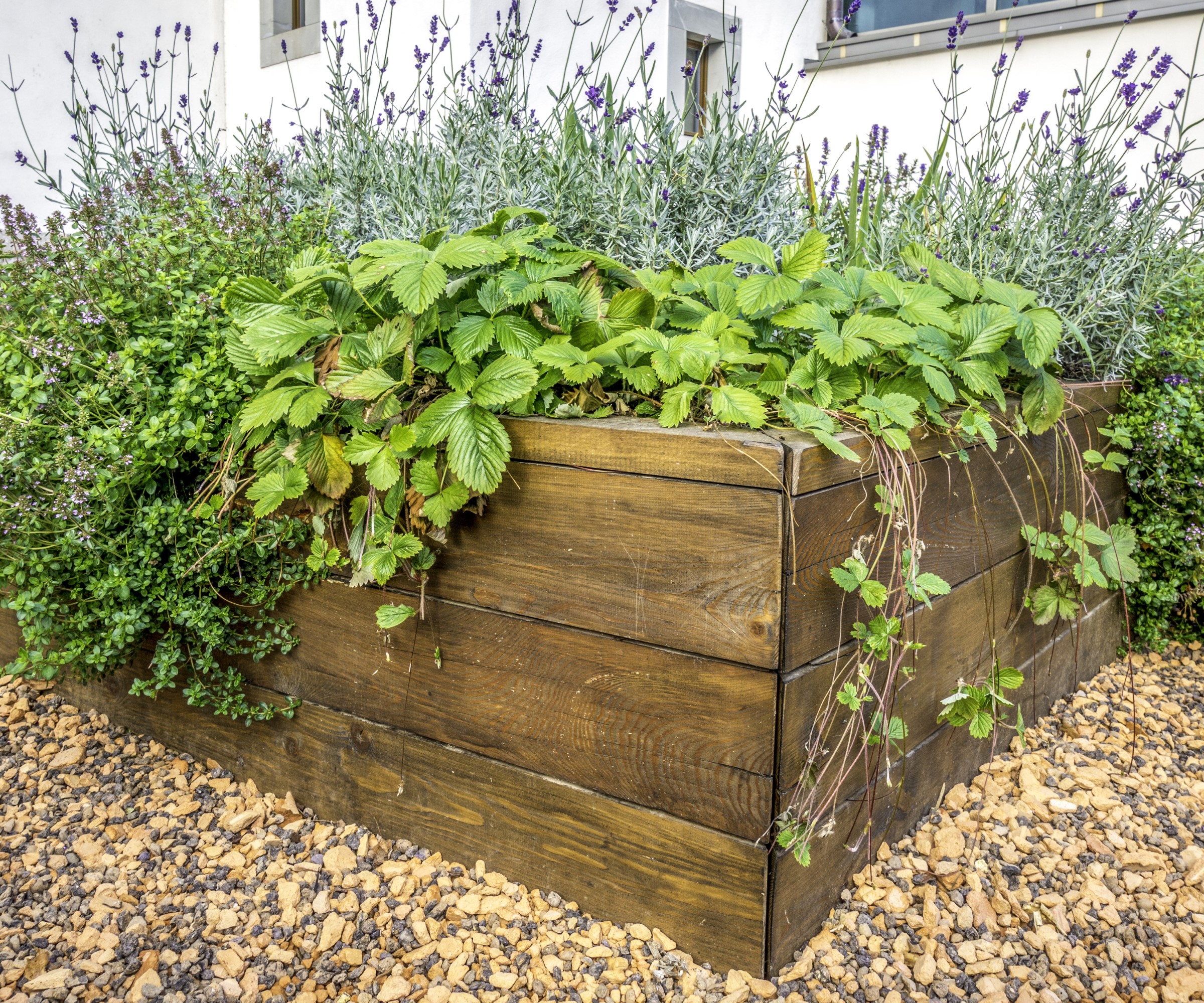
There are lots of choices when it comes to fertilizers. Along with granular and liquid types, there is also the decision between organic and inorganic feeds.
Organic options are made from animal or plant sources, while inorganic feeds are synthetic products made from processed chemicals. There are pros and cons to each - for example, organic feeds develop the overall soil health, while inorganic types tend to be higher in nutrients - and the choice will come down to cost and your personal gardening preferences.
You want a balanced fertilizer to feed beds in spring, one with equal levels of nitrogen, phosphorus and potassium. The ratio of nutrients in any product will be shown as plant fertilizer numbers on the packaging, for example, a balanced fertilizer will display a ratio like 5-5-5 or 10-10-10. Such a balanced feed can either be a slow-release granular fertilizer - which can be either organic or synthetic - or organic matter.
Sarah Warner, greenhouse manager at Case Western Reserve University, claims that the best fertilizer for a raised bed is compost. She says: ‘Not only is it a fertilizer but it is also a soil amendment and can add organic matter into the soil, enhance soil structure, soil fertility, and soil tilth.’
‘Worm castings are a great way to fertilize plants as well! This can be purchased from a local worm farm, depending on your area. Lightly raking it into the garden bed is a great way to add it.’ adds Sarah. As well as buying worm castings, you could also make your own by making a wormery for compost to make fantastic nutrient-rich compost from your kitchen waste.
A good liquid feed for feeding flowers and vegetables in summer will be high in phosphorus and potassium - the nutrients that promote flowering and fruiting. Such a product will usually be designed to be used when growing tomatoes. There is the option to make a natural plant fertilizer at home by using comfrey to make comfrey fertilizer.
Whatever feed you use, always apply it at the recommended rate. It is possible to over-fertilize plants and there can be a tendency to apply more fertilizer to raised beds than you would give plants in the ground - but this can only cause issues.
Fertilizers for raised beds
Organic all-purpose compost derived from 100% dairy cow manure and high in nutrients. It can help improve any soil by providing nutrients that are often depleted.
A bag of organic worm castings that is an ideal soil amendment for all your plants, both indoor and outdoors including vegetables, herbs, flowers and houseplants.
A liquid plant food full of essential nutrients to grow bigger, more beautiful plants. For best results, use every 7 to 14 days on flowers, vegetables, trees, shrubs and houseplants.
FAQs
How often do you change the soil in a raised bed?
If you are managing the soil successfully you should not need to change the soil in a raised bed, ever. Annually adding organic matter and amending the soil before each growing season should continually replenish the soil year after year. Other successful ways to keep the soil healthy include mulching the bed and planting cover crops or green manures over the winter.
An advantage of raised beds is that you can control the growing medium, so choose the best materials to fill a raised garden bed. The amount required will depend on the height of the raised bed, but ideally, a mix should be 30-50% compost mixed with topsoil and sand or grit for drainage.







